#princess palatine
Text








A LITTLE CHAOS (2014)
dir. alan rickman
#a little chaos#costume drama#period drama#perioddramaedit#perioddramagif#sabine de barra#kate winslet#andre la notre#matthias schoenaerts#king louis xiv#alan rickman#philippe duc d'orleans#stanley tucci#madame de montespan#jennifer ehle#princess palatine#paula paul#my gifs#mine
98 notes
·
View notes
Photo
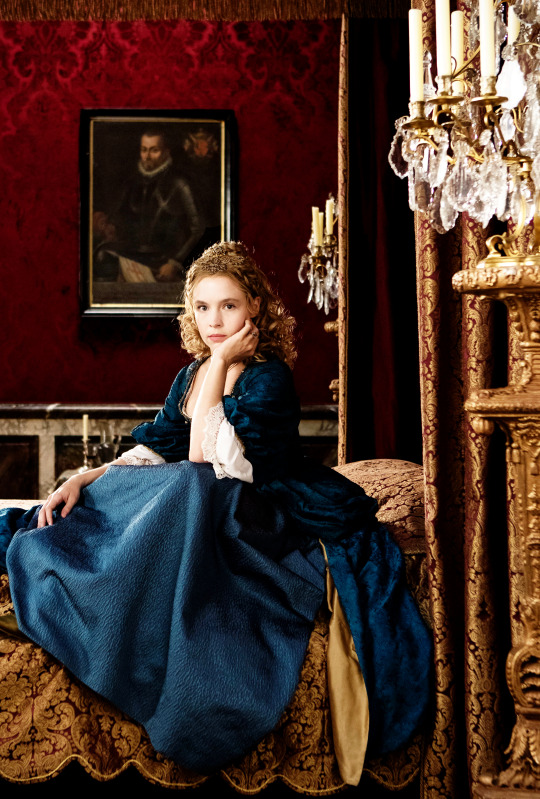
Jessica Clark as Elizabeth Charlotte, Princess Palatine in Versailles (TV Series, 2015-2018).
49 notes
·
View notes
Photo









(Almost) Every Costume Per Episode + Princess Elizabeth Charlotte’s blue skirts and blue textured bodice with gold lace stomacher in 3x07,9,10
#Versailles#VersaillesEdit#VersaillesTV#perioddramaedit#weloveperioddrama#period drama#perioddrama#Elizabeth Charlotte#Princess Palatine#Liselotte#The Book of Revelation#The Powder Keg#The Legacy#costumeedit#costumes#costume edit#costume drama#costume set#costume series#Almost Every Costume Per Episode#historical drama#1600s#17th century#jessica clark#Awkward-Sultana
119 notes
·
View notes
Text
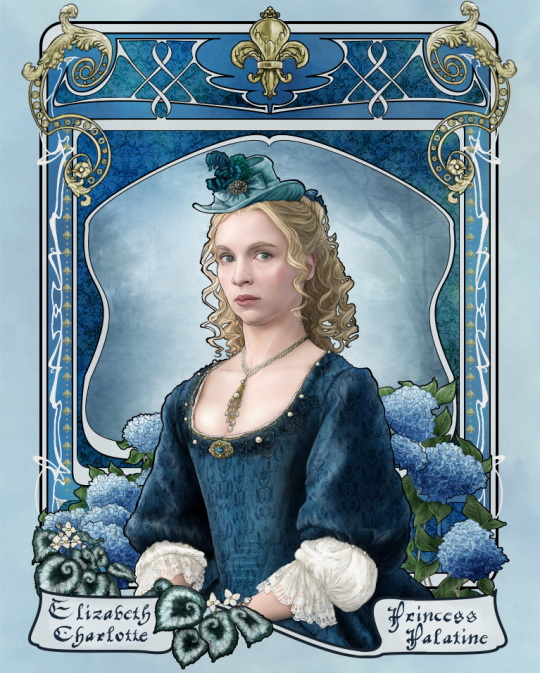
Presenting my latest in this art nouveau inspired set : the wonderfully quirky Liselotte, perfectly played by Jessica Clark in Versailles.
#Versailles#Liselotte#Princess Palatine#Jessica Clark#Versailles fanart#Mucha set#Reposting because Tumblr terminated my original account
10 notes
·
View notes
Text
The Legend of the Princess Augusta or the Palatine Ship
The legend goes back to the historic shipwreck of the Princess Augusta at Block Island in 1738. The ship is known from several contemporary accounts and from statements made by the surviving crew after the sinking, which were discovered in 1925 and reprinted in 1939. The British merchant ship Augusta sailed from Rotterdam in August 1738 under Captain George Long and a crew of fourteen, carrying 240 immigrants to the English colonies in America. The passengers were German Palatines who came from the Palatinate, which is why the ship was referred to as the "Palatine Ship" in contemporary documents, which explains the later confusion about the name. The ship was on its way to Philadelphia, from where the passengers were possibly travelling to a German-owned settlement on the James River in Virginia.
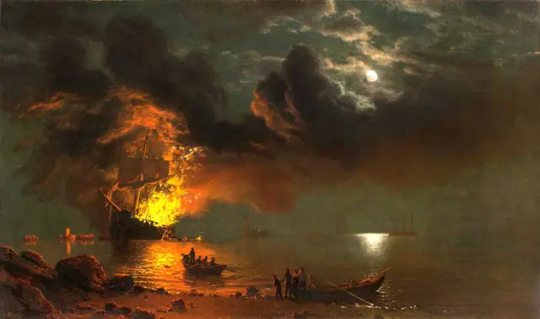
The Burning Ship, by Albert Bierstadt 1869
The Princess Augusta's voyage was ill-fated: The water supply was contaminated, causing a "fever and flux disease" that killed 200 passengers and half the crew, including Captain Long. First Officer Andrew Brook took command when severe storms forced the ship off course to the north, where the survivors were exposed to extreme weather conditions and dwindling supplies for three months. According to the crew, Brook forced the passengers to pay for the remaining rations. Apparently he tried different routes to Rhode Island and Philadelphia, but the storms drove the damaged and leaking Augusta to Block Island. She ran aground in a snowstorm at Sandy Point at the northernmost end of the island at 2 p.m. on 27 December 1738.
According to reports, Brook rowed to shore with the entire crew and abandoned the passengers on board. The Block Islanders apparently did what they could to help. They convinced Brook to let the passengers disembark the next day, and later retrieved their belongings when he left them on board. They also buried about 20 people who died after the shipwreck; the Block Island Historical Society erected a memorial plaque at the site of the "Palatine Graves" in 1947.
The authorities took statements from the crew, but what happened afterwards is unclear. Apparently the crew was not charged for their actions, and they and most of the surviving passengers made it to the mainland, from where little is known about them. Two survivors remained on Block Island and settled there. Most reports indicate that the ship was deemed unsalvageable and was forced out to sea to sink. It may have been set on fire to sink it. According to some reports, a woman, sometimes referred to as Mary Van Der Line, was driven mad by her suffering; she was forgotten and sank with the ship, according to these reports. However, no remains of the wreck have ever been found, and there are indications that the Augusta may have been repaired and sent on to Philadelphia.

There is a rich oral tradition of this event, and numerous sightings were reported in the late 18th and 19th centuries. The legend was immortalised by the poet John Greenleaf Whittier in "The Palatine", which faithfully reproduces the traditional story in verse. Which gave the Legend it's name. On Saturdays between Christmas and New Year's Eve, locals still sporadically report seeing a burning ship pass by. Folklorist Michael Bell, investigating the legend, found that almost a year after the incident, two versions of the night's events were circulated.

The Palatine Graves
The Block Islanders insisted that their citizens had made a valiant attempt to rescue the crew, while the New England mainlanders suspected the islanders of having lured the ship to them in order to seize their cargo. Both legends agreed that a female passenger had refused to abandon ship when it sank, and those who claim to have witnessed her reappearance say that her screams were heard from the ship.
Today, a plaque at the Mohegan Bluffs where the ship is said to have run aground reads: Palatine Graves - 1738. Some claim that those who died that night are buried underground. However, Charlotte Taylor of the Rhode Island Historical Preservation and Heritage Commission has stated that no physical evidence has ever been found to support either this claim or the legend itself.
#naval history#naval mythology#princess augusta#palatine light#ghost ship#18th century#19th century#20th century#age of sail#age of steam
42 notes
·
View notes
Text

“Duchess Elisabeth Charlotte of Orleans was the "daily mail" of her time, her comments and gossip about the courtiers of Versailles were iconic.” - Text & Image Submitted by cenacevedo15
28 notes
·
View notes
Text

A 1631 painting of the four eldest children of Frederick V of the Palatinate (and King of Bohemia) and Elizabeth Stuart, Queen of Bohemia by Dutch painter Gerard van Honthorst.
From left: Princess Elisabeth of the Palatinate, Prince Rupert of the Rhine, Prince Maurice of the Palatinate and Prince Charles Louis (later Elector Palatine).
#17th century art#gerard van honthorst#princess elisabeth of the palatinate#prince rupert of the rhine#prince maurice of the palatinate#prince charles louis
20 notes
·
View notes
Text
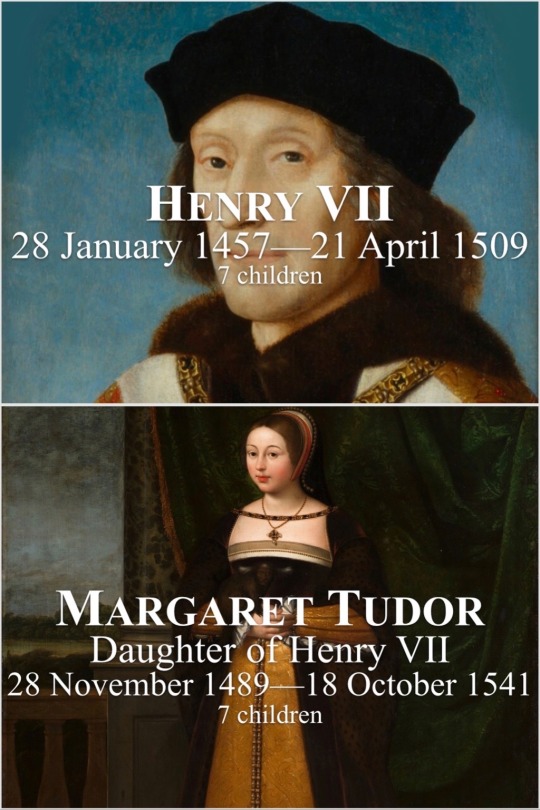



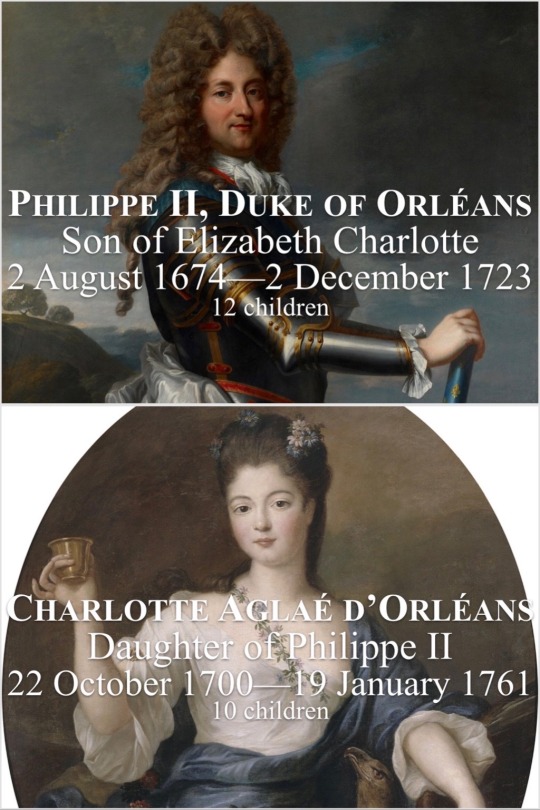
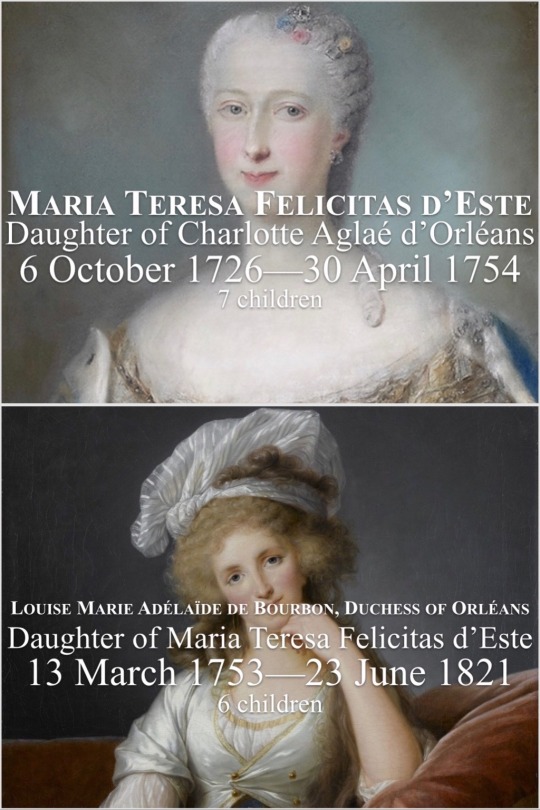




Descendants of the Tudors
#descendants of the tudors#henry vii#margaret tudor#james v#mary queen of scots#james vi and i#elizabeth stuart#charles i louis#elizabeth charlotte madame palatine#philippe ii duke of orléans#charlotte aglaé d’orléans#maria teresa felicitas d’este#louise marie adélaïde de bourbon#louis philippe i#ferdinand philippe duke of orléans#prince philippe count of paris#princess hélène of orléans#margherita archduchess of austria este#prince amedeo duke of aosta#prince lorenz#princess laetitia maria
4 notes
·
View notes
Text
"I am at present in undeserved disgrace."
As the examples of, among others, Marie de Medici, the duchesse de Longueville and the Grande Mademoiselle had demonstrated, the king's relationships with his closest female relatives was potentially as troublesome as that with any prince. After 1661, Louis XIV's principal concern was to uphold his own authority and to prevent the almost inevitable household disputes from threatening the tranquillity of his court. With so many men on active military service, Versailles during the later years of the reign was very much a feminine sphere, and disgrace was a no less constant preoccupation for aristocratic women who were determined to preserve their own personal and dynastic interests. Madame, duchesse d'Orléans, frequently returned to the theme. As a woman of trenchant and forthright views, she had struggled to remain in the king's good graces. In January 1691, she noted with pleasure that the king had paid some of her gambling debts, which she interpreted as a sign "that I am not so deeply in disgrace this year at last." Her good fortune proved short-lived, and many of her problems stemmed from her unguarded correspondence and her almost legendary hostility to the marquise de Maintenon. By September 1696, she could write venomously that:
"I am at present in undeserved disgrace. Whenever I come in the king's apartment the dirty old slut [Maintenon] withdraws and when I beg her to remain, she makes no reply but goes out with a sneer on her face. I am being treated in a very rude fashion. Every day I am forced to wait half-an-hour at the king's door before I am allowed to enter, and sometimes I am even sent away, although at the same time all the king's bastards and even Monsieur himself are in the room."
Some of her discomfiture on this and other occasions may have arisen from impatience with the dictates of protocol, but even if that was the case her sensitivity to every personal or ceremonial slight was typical of court society as a whole.
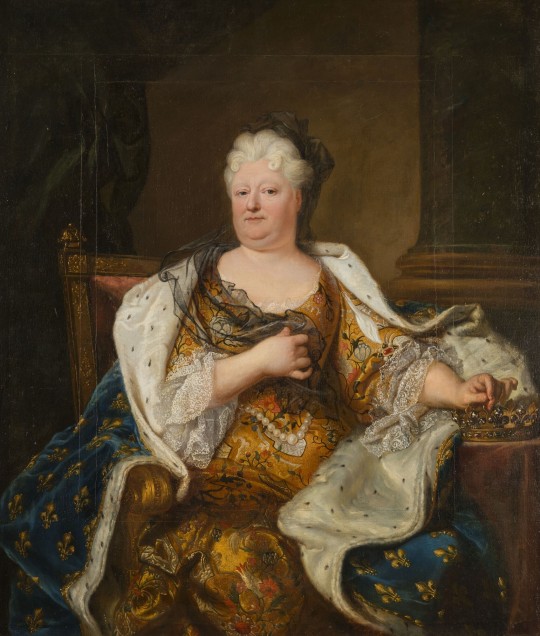
Julian Swann- Exile, inprisonment or death- The Politics of Disgrace in Bourbon France
#xvii#julian swann#exile inprisonment or death: the politics of disgrace in bourbon france#marie de médicis#anne geneviève de bourbon condé#madame de longueville#la grande mademoiselle#anne marie louise d'orléans#louis xiv#la princesse palatine#élisabeth charlotte du palatinat#madame de maintenon
18 notes
·
View notes
Note
"rn I feel like reading about someone's quiet daily life, maybe a diary or letters, set in a place or context I don't know much about, without turmoil or tragedy" oh! do you have any recommendations for books like this?
This is one of my favourite types of books! Here are 30(ish) recs...
May Sarton's The House by the Sea or Plant Dreaming Deep
Gyrðir Elíasson's Suðurglugginn / La fenêtre au sud (not translated into English unfortunately!), also Bergsveinn Birgisson's Landslag er aldrei asnalegt / Du temps qu'il fait (exists in German too)
Gretel Ehrlich's The Solace of Open Spaces, which iirc was originally written as journal entries and letters before being adapted into a book
Kenneth White's House of Tides: Letters from Brittany and Other Lands of the West
Sei Shonagon's Pillow Book
The Diary of a Provincial Lady, E. M. Delafield
Growing Up with the Impressionists: The Diary of Julie Manet
Elizabeth and Her German Garden by Elizabeth von Arnim (do not read if you don't like flowers)
The Road Through Miyama by Leila Philip (I've mentioned it before, it feels like this gif)
The Sound of a Wild Snail Eating, I keep recommending this one but it's so nice and I love snails
Epicurean Simplicity, Stephanie Mills
The Light in the Dark: A winter journal by Horatio Clare
The Letters of Rachel Henning
The letters of Tove Jansson, also The Summer Book and Fair Play
The diary of Sylvia Townsend Warner—here's an entry where she describes some big cats at the zoo. "Frank and forthcoming, flirtatious carnivores, [...] guttersnipishly loveable"
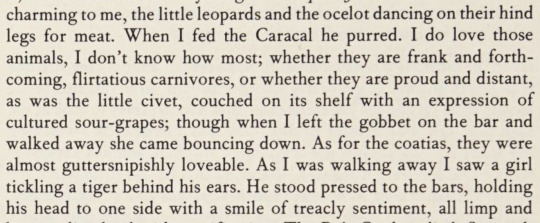
The Letters of Rachel Carson & Dorothy Freeman were very sweet and a little bit gay. I mostly remember from this long book I read years ago that Rachel Carson once described herself as "retiring into her shell like a periwinkle at low tide" and once apologised to Dorothy because she had run out of apple-themed stationery.
Jane Austen's letters (quoting the synopsis, "Wiser than her critics, who were disappointed that her correspondence dwelt on gossip and the minutiae of everyday living, Austen understood the importance of "Little Matters," of the emotional and material details of individual lives shared with friends and family")
Madame de Sévigné's letters because obviously, and from the same time period, the letters of the Princess Palatine, Louis XIV's sister-in-law. I read them a long time ago and mostly I remember that I enjoyed her priorities. There's a letter where she complains that she hasn't received the sausages she was promised, and then in the next paragraph, mentions the plot to assassinate the King of England and also, the Tartars are walking on Vienna currently.
Wait I found it:

R.C. Sherriff's The Fortnight in September (quoting the author, "I wanted to write about simple, uncomplicated people doing normal things")
A Tree Grows in Brooklyn, Betty Smith
Pond, Claire-Louise Bennett
Rules for Visiting, Jessica Francis Kane
The following aren't or aren't yet available in English, though some have already been translated in 5-6 languages:
ツバキ文具店 / La papeterie Tsubaki by ito Ogawa
半島へ / La péninsule aux 24 saisons by Mayumi Inaba
Giù la piazza non c'è nessuno, Dolores Prato (for a slightly more conceptual take on the "someone's everyday life" theme—I remember it as quite Proustian in its meticulousness, a bit like Nous les filles by Marie Rouanet which is much shorter and more lighthearted but shows the same extreme attention to childhood details)
Journal d'un homme heureux, Philippe Delerm, my favourite thing about this book is that the goodreads commenter who gave it the lowest rating complained that Delerm misidentified a wine as a grenache when actually it's a cabernet sauvignon. Important review!
Un automne à Kyôto, Corinne Atlan (I find her writing style so lovely)
oh and 西の魔女が死んだ / L’été de la sorcière by Kaho Nashiki —such a little Ghibli film of a book. There's a goodreads review that points out that Japanese slice-of-life films and books have "a certain way of describing small, everyday actions in a soothing, flawless manner that can either wear you out, or make you look at the world with a temporary glaze of calm contentment and introspective understanding [...]"
I'd be happy to get recommendations in this 'genre' as well :)
#book recs#i should have posted this ages ago but i was waiting to finish the book i was reading to see if it#should be added to the list#but in the end it wasn't worthy#sorry for the delay!
2K notes
·
View notes
Text
oh just found out that the meaning of nightingale's cape name is apparently not as self-evident as i'd assumed so breakdown of the meanings of all the alt vic & meeb cape names
dauphine - historical title of the crown princess of france
palatine - historical rank within some royal courts, etymologically related to "paladin". coincidentally also anatomically refers to the inside of the mouth
queen of hearts - the one from alice in wonderland. often confused with the red queen, who's only in the second book, alice through the looking glass
heracles - you would think it's because of the "trying to make up for wrongs committed while magically induced into a blind murderous rage" thing, and it is, but it's also because of the "wearing the impervious skin of a beast over his own" thing
gloryblaze - play on "blaze of glory" and "glory days". even dumber than "manpower" and "laserdream" because he doesn't even have fire-related powers, just light
nightingale - florence nightingale is considered the founder of modern nursing. coincidentally, "florence nightingale syndrome" refers to the (likely imagined) phenomenon of nurses falling in love with their patients
helios - sun deity, he has light powers like the sun, his costume is eclipse-themed as previously discussed
swan queen - swan maidens are a common fairy tale motif wherein a girl is transformed into a swan, or a swan into a girl; often the story involves taking the swan's wings away and hiding them to force her to remain in the form of a girl. related, by some measures, to the story of the crane wife, or potentially the ugly duckling
margrave - archaic feudal title, etymologically related to "marquis"; in some languages the two terms are not distinguished
vicereine - feminine feudal title for one who acts in the absence of/as extension of the will of the ruler
artemis - moon deity, associated with hunting & archery, her costume is crescent moon-themed as previously discussed
prince du sang - historical title for male descendants of a sovereign, usually translated from french as "prince of the blood"
52 notes
·
View notes
Text

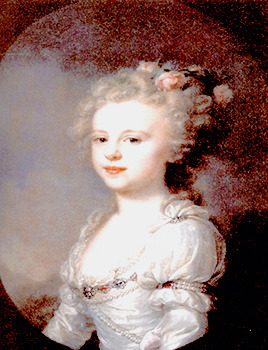



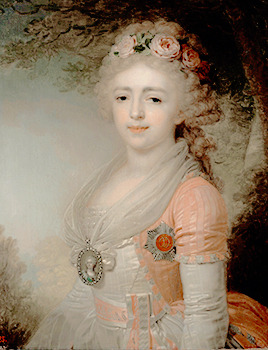
"In 1799, three years after her failed betrothal with the King of Sweden, another marital project originated for Alexandra. Previously in 1798, Dukes Ferdinand Augustus and Alexander Frederick of Württemberg who were the brothers of the Empress Maria Feodorovna, arrived in St. Petersburg to serve in the Russian army. They expressed the interest of Austria to join with Russia in a coalition against the rising power of the French Republic and Napoleon, and to cement this alliance, it was decided to arrange a marriage between Alexandra and Archduke Joseph of Austria, Palatine (Governor) of Hungary and a younger brother of Francis II, Holy Roman Emperor. Archduke Joseph personally came to Russia to see his bride. The meeting between them was successful. In mid-February 1799 the betrothal ball was held. Later, a marriage contract was signed in which Alexandra would be allowed to kept her Russian Orthodox faith. In October, Count Fyodor Rostopchin wrote:
"Believe me, that's not good started to strengthen the alliance with the Austrian court by ties of blood... Of all the sisters she will be given the least successful marriage. She will have nothing to wait for, and her children even more so."
On 25 September 1799, a decree was published about the royal title of Alexandra. In Russia, she was referred to as "Her Imperial Highness Grand Duchess the Archduchess of Austria" with the French prefix of "Palatine d'Hongrie". The wedding took place on 30 October 1799 at Gatchina Palace, one week after the wedding of her sister Elena. To celebrate both events, poet Gavrila Derzhavin wrote the ode "the wedding celebrations of 1799". On 21 November the couple went to Austria. Countess Varvara Golovina remembered that Alexandra was sad to leave Russia, and her father Emperor Paul I "constantly repeated, would not see her since her sacrifice." According to Alexandra's confessor, Andrei Samborski, Alexandra was given a cold reception in Vienna. However, other sources offer a different view. Queen Maria Carolina of Naples (the Emperor's mother-in-law) and her daughters arrived in Vienna in August 1800 for a long stay. Maria Carolina's daughter, Princess Maria Amalia of Naples, wrote in her journal that on 15 August the Queen and her daughters were introduced to Alexandra, whom she described as "very beautiful". Maria Amalia and Alexandra became friends during this time; and the Princess of Naples wrote in her journal that the Russian Grand Duchess and her husband had a friendly relationship with the rest of the imperial family and took part in the family gatherings, parties and balls in Vienna, which contrasts with the version given by Andrei Samborski. For instance, in January 1801, Maria Amalia wrote in her journal that the imperial family used to attend balls in Archduke Joseph's residence in Vienna, where "beautiful Alexandra, always serious and sad, has a magnificent household." When she was presented to Emperor Francis II, she reminded him of his first wife Elisabeth of Württemberg, who was her maternal aunt; this caused the jealousy of Empress Maria Theresa, Francis II's second wife, who also was envious of Alexandra's beauty and fine jewelry. Imperial confessor Andrew Samborski wrote:
"Remembering the happy cohabitation with her led him (the Emperor) in extreme confusion of mind which afflicted the heart of the Empress, his present wife. After this, she became in the innocent victim of the Empress' implacable vengeance...The Empress not forgotten and humiliated her parents and siblings when she called them a family of freaks, due to the treatment that Grand Duke Constantine gave to his wife."
Once, Alexandra turned up to a ball beautifully dressed, with magnificent jewellery. The Empress was incensed at being upstaged by the Archduchess, and ordered her to remove her jewellery, and also told her that she could no longer wear them. Heeding her instructions, Alexandra only decorated her hair with flowers when she attended a play some time later. The flowers highlighted her beauty, leading her to be applauded and being given a standing ovation, making Maria Theresa even more furious. Archduke Joseph could not protect his wife from these attacks. Furthermore, her Eastern Orthodox faith aroused the hostility of the Roman Catholic Austrian court, who urged her to convert. Pavlovna was popular among Hungarians, both the nobles and the commoners. According to the legend, it was her suggestion to add the color green as the third color to the flag of Hungary. Hungarians had been using red and silver, then red and green as their national colors for centuries at the time. However, in the late 18th century, a third color was proposed to be added to the flag, to follow the style of the French tricolor. Pavlovna suggested green as a symbol for hope. By the mid-19th century, the red-white-green Hungarian tricolor became widespread.
Wikipedia of Grand Duchess Alexandra Pavlovna.
81 notes
·
View notes
Text
40k Femslash Appreciation Post
There isn't nearly enough good wlw in Warhammer 40k, and don't get me wrong, I understand why. Considering the majority of the narratives consist of manly men doing manly things while wearing a buick on their torso and a refrigerator on each arm, there's going to be an obvious skew, and that's okay!
But today, I want to highlight some of the ladies of the 40k universe, as well as the other ladies that those ladies like to kiss. For the record, all of these will be on Archive of Our Own.
In my own corner, I've contributed:
Ennui: A longform about a Dark Eldar Wych and a Sororitas who find unlikely love on a world plagued by Orks, and in the process, discover a much darker plot that will threaten the fabric of the galaxy.
From Afar: Local Eldar Pathfinder pines after a pretty PDF guardswoman from the distance in the months while the Great Devourer approaches.
Saintsbride: A series rather than a single fic, that creatively reinterprets Saint Celestine and Inquisitor Greyfax's relationship in the audio drama Our Martyred Lady as being very gay.
His Fury, Our Hearts: Three Sisters Militant of the Adeptus Sororitas Heavy Armor division do battle against cult elements of the Alpha Legion while defending an irradiated hellhole, and also they kiss each other.
More excellent femslash can be found in the hands of user OnTheHuh.
The Iron Tower: An unflinching look at the darker side of the 40k universe on the smaller scale through the eyes of the 'bedmate' of the Planetary Governor of a Feudal world. Absolutely mind the tags, but you're in the mood for some angst and Regency-era style lesbian pining, this is your jam.
Sister Militant: Some of the best Adeptus Sororitas work out there, follows the trials and tribulations of a haunted Sister Militant as she struggles with her worth, her faith, and the demons in her mind. Very much mind the tags, again, but also again, Lesbian Angst and Pining. Also some really top notch action.
Finally, some more excellence from user AncillaThings!
Nemain's Bellum: A story that follows the ascension of a Sister Novitiate by her mentor, Palatine Caddel, through her first war and onward, when I said 'Sister Militant' is some of the best, this would be the rest of the best. Great sci-fi action and more girls kissing. Also trauma, but that's what we're here for, right?
Pigeons and Eagles: For fans of the truly excellent Rogue Trader game by OwlCat studios, and who maybe wants to see Sister Argenta being cute and gay with the God-Emperor's weirdest perfect princess, Cassia Orsellio, this one is for you.
#warhammer 40000#warhammer 40k#fanfic appreciation#ao3fic#femslash#wlw post#ao3 fanfic#sapphic#sapphic fiction#sapphic fanfiction#sapphics in 40k
23 notes
·
View notes
Photo









(Almost) Every Costume Per Episode + Princess Elizabeth Charlotte’s teal velvet bodice with gold print and gold skirts in 3x01,5,6,8,10
#Versailles#VersaillesEdit#VersaillesTV#perioddramaedit#weloveperioddrama#period drama#perioddrama#Princess Palatine#Liselotte#Elizabeth Charlotte#1600s#17th century#Smoke and Mirrors#The Afterlife#The Wheel of Fortune#Men and Gods#The Legacy#costumeedit#costumes#costume edit#costume drama#costume set#costume series#Almost Every Costume Per Episode#historical drama#Jessica Clark#Awkward-Sultana
115 notes
·
View notes
Text

Princess Louise Hollandine, Princess Palatine, Abbess of Maubuisson, Pontoise painted by Gerard van Honthorst (1592 - 1656)
#art#art history#artwork#baroque#culture#history#museums#painting#vintage#curators#gerard van honthorst
78 notes
·
View notes
Text
LAZAREVIC SISTERS IV
Princess Teodora Lazarevic

Early Life
She was likely born after 1366 and before 1371 as Princess Teodora Lazarevic, the fourth child and daughter of Lazar and Milica of Serbia. Like her elder sisters she was likely born in Prilepac and later moved to Krusevac.
Though it is unkown if Teodora was a fanatic of the arts as most in her family, the constructions in Krusevac ended around 1377, so she mostly had time for various branches of resources for entertainments to watch merchants, craftmans and entertainers perform at her father’s court or at the town squares.
She was likely closer to her younger sister; Olivera, as in the late 1380s they were the only unmarried daughters left of the royal couple.
However her marital status did not remain chaste for much longer.
Marriage to Nikola II Garai
Like many of her sisters’ previous marriages this one was another political tool of their father; Lazar of Serbia.
At the beginning of Lazar’s reign he acted as a vassal for the Kingdom of Hungary until he eventual got a way to get his state annulled away from the vassalage.
However Lazar still wanted to remain informed of King Sigismund, his thoughts and diplomatic plans. As a result, he married one of his youngest daughters to an assiociate of the then monarcch, Nikola II Garai.
Nikola II Garai was a Roman Catholic Ban of Masco and Hungarian Palatine. It is believed the two were wed after 1386 and before 1389. It is also possible that Teodora, who was an Orthodox Christian up until her marriage took “Helen” as her name of conversion.
Though no information has been recorded nor preserved about the intimacy of their union, Nikola proved himself to be a reliable son-in-law as in 1389-a short time before the Battle of Kosovo-he convieced King Sigismund to abondon his plans to return Lazar into some sort of vassalage, and that same year the monarchs “reconciled” through the mediation of Nikola.
Despite the divide in sources about the maternity of two of Nikola’s children, the noble couple most likely share two children with eachother, the eldest and Nikola’s namesaker; Nikola III Garai, and a daughter called Katerina Garai. Their date of births are unknown.
From 1390 to 1402, Nikola was promoted and served as the Ban of Croatia and Dalmatia. As a result of this, he was transfered to another location, it is possible and probbale that Helen moved with him.
Later Life
We have no information about the later life of Helen, she passed away between 1396-1405, because by 1405 her widowed husband had remarried a woman named Anna with whom he shared a few more children with.
Her reason of early death is unknown. Compared to the rest of her family she died quite young, still remaining in her 30s. The Lazarevics are deemed quite healthy, tall, and beautidul so her reason of death might have been something else. Even if she was in her late 30s, it is still quite a young age for a aristocrat woman to pass away at.
{While looking for her reason of death, I couldn’t find an outbreak of the plague or a fatal virus in the location she occuped when she was alive, so more probable her reason of death might be childbirth, or pregnancy complications, or perhaps Helen always had a fragile dealth.}
Issue
Nikola III Garai
Katarina Garai
( Sources: “КЋЕРИ КНЕЗА ЛАЗАРА ИСТОРИЈСКА СТУДИЈА ПОГОВОР” by Jelka Redep, Dve srpske sultanije : Olivera Lazarevic (1373-1444) : Mara Brankovic (1418-1487) by Nikola Giljen, http://istorijska-biblioteka.wikidot.com/art:teodora-kci-kneza-lazara )
#Lazarevic Dynasty#Lazarevic#14th century#15th century#middle ages#medieval times#Moravian Serbia#History#geology#Princess#Lazar of Serbia#Nikola II Garai#Nikolagarai#Illustration#Teodora Lazarevic#Helen Garai#art#teodoralazarevic#lazarevicsisters
35 notes
·
View notes